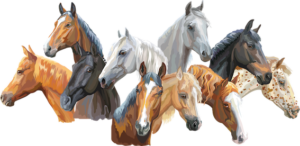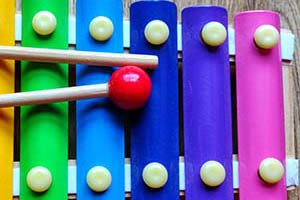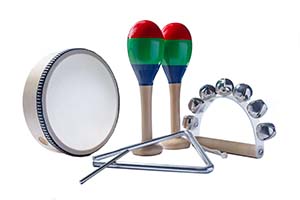Prep. Lesson 9. Rhymes and song
Prior learning: None
Duration: 30 minutes
Materials: None
Keywords: Beat, singing, chanting, partners, rhymes, circle games
Difficulty: ![]()
 Melodic development
Melodic development
![]() Students discover a classic classroom song.
Students discover a classic classroom song.
- Students are seated and attentive.
- Sing the song's melody slowly and clearly, encouraging the class to listen and follow along.
- Repeat the melody a few times so they can become familiar with it.
- Invite them to sing with you once the class is comfortable with the melody.
- Sing the song slowly at first, then gradually increase the tempo.
- Add simple actions or gestures accompanying the lyrics to make the song more engaging.
- For example, you could pretend to hold reins while singing about the bell horses or point to an imaginary clock while singing at different times.
- Encourage the class to practice the song multiple times and offer gentle feedback to help students improve.
 Creative movement
Creative movement
![]() Students sing a well-known song, imitate imaginary activities in this circle game and keep the beat.
Students sing a well-known song, imitate imaginary activities in this circle game and keep the beat.
- Teach the class the lyrics and melody of the first verse.
- While singing the first verse of Mulberry Bush, students hold hands in a circle as they move to the beat.
- In subsequent verses, students move around in a circle and imitate the activities mentioned in the specific verses with their hands.
- Let students offer their own activities, such as "cleaning my teeth" or "walking my dog".
- [Dr. James Cuskelly begins on an E rather than an F, as indicated]
 Rhythmic development
Rhythmic development
![]() Students demonstrate language abilities and use their imagination with this rhyme.
Students demonstrate language abilities and use their imagination with this rhyme.

Lyrics
Ten galloping horses,
Came through the town.
Five were white,
And five were brown.
They galloped up,
And they galloped down.
Ten galloping horses,
Came through the town!
- Demonstrate the rhyme, speaking in a measured cadence.
- Ten Galloping Horses is a fun, engaging finger-play rhyme that helps children develop their fine motor skills and imagination.
- Begin by holding up both hands, with fingers spread apart, representing the ten galloping horses.
- As you say the line "Ten galloping horses," move your hands up and down, mimicking the horses galloping. Keep a lively pace to create excitement.
- For the line "Rode through the town," move your hands from one side to the other as if the horses travel across a landscape. You can also make your fingers wiggle to show the horses' movement.
- When you say, "Five were white," hold up one hand with all five fingers extended and wiggle them to represent the white horses.
- For the line "Five were brown," do the same with your other hand, wiggling all five fingers to represent the brown horses.
- As you recite "They galloped up, they galloped down," move your hands up and down again, just like in step 2, to show the horses galloping.
- For the final line, "Ten galloping horses rode through the town," repeat the actions from step 3, moving your hands from side to side and wiggling your fingers to show the horses travelling.
- As with Ten Little Soldiers, Ten Galloping Horses is a good fingerplay exercise for developing language abilities (rhyme) and dexterity as students gain proficiency in moving their hands and fingers.
- This exercise and other similar fingerplays can help with the instrumental techniques for the recorder, ukulele etc.
 Part work
Part work
![]() In this circle game, students explore imaginative play and practise the song with a partner.
In this circle game, students explore imaginative play and practise the song with a partner.
- Teach the song and explain the movements to the class.
- Students form a circle and hold hands, lifting them to form a 'window'.
- Select a student to move into the middle.
- The class begins to sing the song while the student in the middle weaves in and out of the raised arms.
- Remind the moving student to go through each window in order and choose a partner to take to the middle. They then dance while the remainder of the class claps hands to the song.
- The first student returns to the last gap, then the song begins again with the new students in the middle of the circle.
- Repeat as time permits.
 Video
Video
![]() Sam and Zoe show real-world examples of where beat can be found, other than in music.
Sam and Zoe show real-world examples of where beat can be found, other than in music.
 Farewell
Farewell
![]() Reinforces students' pitch ability through listening, imitation, and repetition. 'Good morning' or 'Bee, Bee, Bumblebee' are good examples.
Reinforces students' pitch ability through listening, imitation, and repetition. 'Good morning' or 'Bee, Bee, Bumblebee' are good examples.
Suggested lessons
Prep. Lesson 10. Higher & lower sounds
Students identify high and low sounds through singing and using instruments. AC9AMUD01
Prep. Lesson 11. Different sounds
Students discover sounds that are made from wooden and metal instruments. AC9AMUD01
Prep. Lesson 12. Louder and softer sounds II
Students learn that sounds can be louder or softer. AC9AMUD01



